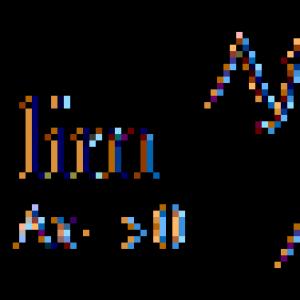Subtraction or difference of integers. Rules for the sum and difference of numbers How to find the sum and difference of numbers
Difference or subtraction of integers is directly related to the topic of addition of integers. After all, knowing the sum and one of the terms, you can find the second term. Let's look at an example:
We have 10 apples in the basket. The first time you added 2 apples to the basket, how many apples were added to the basket the second time to get 10 apples in the end?
Let us denote the variable x as the number of apples added a second time. If we add two apples to the variable x, we get 10 apples. Mathematically, the entry would look like this:
to find the variable x you need to remove 2 apples from the basket or subtract one known term 2 from the sum 10.
That is, the variable x=8.
Definition:
The difference of two integers is an integer that, when added to the subtrahend, gives the minuend.
The difference of integers a and b is denoted as a-b.
Differencea-b is the sum of the numbersa and the opposite numberb.
a-b=a+(-b)
where b and –b are opposite numbers.
Example:
5-2=5+(-2)=3
Subtracting positive integers with examples.
Example:
Subtract the number 5 from the integer 12.
Solution:
According to the difference rule, we must replace the subtrahend 5 with the opposite number, that is, -5 and perform.
Example:
Subtract 56 from the number 37.
Solution:
You need to replace the subtrahend number 56 with the opposite number, that is, the number -56, and perform the addition of integers with different signs.
37-56=37+(-56)=-21
Example:
From the number -4 you need to subtract the number 7.
Solution:
Replace the subtracted number 7 with the opposite number -7 and add from according to the rule
4-7=-4+(-7)=-11
Subtracting negative integers with examples.
Example:
Find the difference between the numbers 6 and -8.
Solution:
According to the difference rule, you need to replace the subtrahend -8 with the opposite number +8 or 8 and calculate the sum of the integers. We get:
From the whole number -14, subtract the number -10.
You need to replace the subtracted -10 with the opposite number +10 or 10 according to the rule for subtracting integers and then perform the addition.
14-(-10)=-14+10=-4
Subtracting zero from integers.
If you subtract zero from an integer, the number does not change.
Let's look at an example:
3-0=3+0=3
a-0=a
If we subtract zero from zero, we get zero.
Subtraction of identical integers.
Let's consider the problem:
Misha received 2 candies from his mother and he immediately treated his friend Sasha to two candies. How many sweets does Misha have left?
Solution:
Misha received 2 candies and gave 2 candies, mathematically it can be written like this:
Answer: Misha has 0 candies left.
That is, if you do Subtracting equal numbers results in zero.
Checking the subtraction result.
How to check if you found the difference of two integers correctly?
The answer is simple; it lies in the very definition of the difference between two integers. Need to add the difference with the subtrahend we get the minuend. The verbal formula will look like this:
Difference + Subtrahend = Minuend
Example:
19-5=14
19 is our minuend;
5 – subtrahend;
14 – difference.
Let's check:
We add the minuend to the difference; if we perform the subtraction correctly, we get the minuend.
Another example:
Check subtraction 12-23=-11
12 – reduced;
23 – subtractable;
-11 – difference.
Let's check the subtraction:
Difference + Subtrahend = Minuend
The difference is usually called the result obtained by subtracting a smaller number from a larger one. In this case, the first number from which the other is subtracted is called the minuend (after all, it is this number that we are reducing in the process). The second number, subtracted from the first number, is called subtrahend. In sum with the difference, the subtrahend becomes the minuend, and the difference between the minuend and the difference becomes the subtrahend. In cases where the subtrahend exceeds the minuend, the difference between the numbers becomes negative.
There are several difference formulas:
- difference formula a-b = c
- formula for difference of squares a 2 - b 2 = (a - b)*(a + b)
- formula for difference of cubes a 3 - b 3 = (a - b)*(a 2 + ab + b 2)
- potential difference formula U=Aq
- formula for squared difference (a - b) 2 = a 2 - 2ab + b 2
- difference cube formula (a - b) 3 = a 3 - 3a2b + 3ab 2 - b 3
What is the difference and how to find it
You can calculate the difference using a regular, familiar calculator. To do this, press the “C” button, enter the numbers of the minuend, then press the “-” button and enter the subtrahend. The result is obtained by pressing the “=” button. There are also less common models of calculators with reverse, so-called Polish notation. Here, to calculate the difference, instead of the “-” button, you should press the button with the image of an up arrow (due to this, the number goes to the stack or memory card of the action). After that, enter the subtrahend and press the “-” button, getting a ready answer.
There is also a certain summing device, the capabilities of which include only the addition of numbers. It is possible to find the difference using it. To do this, you need to mentally reduce the subtrahend by 1. After this, we transfer the digits of the number to the additional category, where 0 is equal to 9, 1 is equal to 8, etc. The higher digits remaining free are filled with nines. Added components of a difference of this kind cause the device counter to overflow and indicate the difference.
What is potential difference
The concept of potential difference is used by physicists. The potential difference can be obtained by connecting a voltmeter to two points of the circuit, where the voltage of the first is conditionally equal to U1, and the second is U2. In this case, the voltmeter will show the result in the form of voltage U1-U2, which is called the potential difference. Any galvanic cell produces a voltage that determines the difference in the electrochemical potentials that make up the electrodes of the substance element.
Before voltage stabilizers were invented, Weston elements made it possible to calibrate voltmeters. The reacting components selected in them ensured a high level of stability of the potential difference. There is also the concept of pressure difference, which is used in hydraulic and pneumatic weapons. This difference is an analogue of the electrical potential difference.
How to teach your child subtraction and addition
Even before starting school, it is advisable for the child to master basic mathematical operations and gain an understanding of what a difference or sum is. To make it easier for your child to count, use any available means during the learning process. Don't be afraid to visualize the task. For example, it will be much easier for a child to decide how many apples he will have left if he shares half with a friend on real objects, rather than on a faceless piece of paper.
Children also really like guessing tasks. Eg. the standard example “2+2=4” can be replaced with “2+x=4”. This exercise will force the child to think outside the box and develop logic.
Many people have heard about arithmetic progression, but not everyone has a good idea of what it is. In this article we will give the corresponding definition, and also consider the question of how to find the difference of an arithmetic progression, and give a number of examples.
Mathematical definition
So, if we are talking about an arithmetic or algebraic progression (these concepts define the same thing), then this means that there is a certain number series that satisfies the following law: every two adjacent numbers in the series differ by the same value. Mathematically it is written like this:
Here n means the number of element a n in the sequence, and the number d is the difference of the progression (its name follows from the presented formula).
What does knowing the difference d mean? About how “far” neighboring numbers are from each other. However, knowledge of d is a necessary but not sufficient condition for determining (restoring) the entire progression. It is necessary to know one more number, which can be absolutely any element of the series under consideration, for example, a 4, a10, but, as a rule, they use the first number, that is, a 1.
Formulas for determining progression elements
In general, the information above is already enough to move on to solving specific problems. Nevertheless, before the arithmetic progression is given, and it will be necessary to find its difference, we will present a couple of useful formulas, thereby facilitating the subsequent process of solving problems.
It is easy to show that any element of the sequence with number n can be found as follows:
a n = a 1 + (n - 1) * d
Indeed, anyone can check this formula by simple search: if you substitute n = 1, you get the first element, if you substitute n = 2, then the expression gives the sum of the first number and the difference, and so on.

The conditions of many problems are composed in such a way that, given a known pair of numbers, the numbers of which are also given in the sequence, it is necessary to reconstruct the entire number series (find the difference and the first element). Now we will solve this problem in general form.
So, let two elements with numbers n and m be given. Using the formula obtained above, you can create a system of two equations:
a n = a 1 + (n - 1) * d;
a m = a 1 + (m - 1) * d
To find unknown quantities, we will use a well-known simple technique for solving such a system: subtract the left and right sides in pairs, the equality will remain valid. We have:
a n = a 1 + (n - 1) * d;
a n - a m = (n - 1) * d - (m - 1) * d = d * (n - m)
Thus, we have excluded one unknown (a 1). Now we can write the final expression for determining d:
d = (a n - a m) / (n - m), where n > m
We received a very simple formula: in order to calculate the difference d in accordance with the conditions of the problem, it is only necessary to take the ratio of the differences between the elements themselves and their serial numbers. One important point should be paid attention to: the differences are taken between the “senior” and “junior” members, that is, n > m (“senior” means standing further from the beginning of the sequence, its absolute value can be either greater or less more "junior" element).
The expression for the difference d progression should be substituted into any of the equations at the beginning of solving the problem to obtain the value of the first term.

In our age of computer technology development, many schoolchildren try to find solutions for their assignments on the Internet, so questions of this type often arise: find the difference of an arithmetic progression online. For such a request, the search engine will return a number of web pages, by going to which you will need to enter the data known from the condition (this can be either two terms of the progression or the sum of a certain number of them) and instantly receive an answer. However, this approach to solving the problem is unproductive in terms of the student’s development and understanding of the essence of the task assigned to him.
Solution without using formulas

Let's solve the first problem without using any of the given formulas. Let the elements of the series be given: a6 = 3, a9 = 18. Find the difference of the arithmetic progression.
Known elements stand close to each other in a row. How many times must the difference d be added to the smallest to get the largest? Three times (the first time adding d, we get the 7th element, the second time - the eighth, finally, the third time - the ninth). What number must be added to three three times to get 18? This is the number five. Really:
Thus, the unknown difference d = 5.
Of course, the solution could have been carried out using the appropriate formula, but this was not done intentionally. A detailed explanation of the solution to the problem should become a clear and clear example of what an arithmetic progression is.
A task similar to the previous one
Now let's solve a similar problem, but change the input data. So, you should find if a3 = 2, a9 = 19.
Of course, you can again resort to the “head-on” solution method. But since the elements of the series are given, which are relatively far from each other, this method will not be entirely convenient. But using the resulting formula will quickly lead us to the answer:
d = (a 9 - a 3) / (9 - 3) = (19 - 2) / (6) = 17 / 6 ≈ 2.83
Here we have rounded the final number. The extent to which this rounding led to an error can be judged by checking the result:
a 9 = a 3 + 2.83 + 2.83 + 2.83 + 2.83 + 2.83 + 2.83 = 18.98
This result differs by only 0.1% from the value given in the condition. Therefore, the rounding used to the nearest hundredths can be considered a successful choice.
Problems involving applying the formula for the an term

Let's consider a classic example of a problem to determine the unknown d: find the difference of an arithmetic progression if a1 = 12, a5 = 40.
When two numbers of an unknown algebraic sequence are given, and one of them is the element a 1, then you do not need to think long, but should immediately apply the formula for the a n term. In this case we have:
a 5 = a 1 + d * (5 - 1) => d = (a 5 - a 1) / 4 = (40 - 12) / 4 = 7
We received the exact number when dividing, so there is no point in checking the accuracy of the calculated result, as was done in the previous paragraph.
Let's solve another similar problem: we need to find the difference of an arithmetic progression if a1 = 16, a8 = 37.
We use an approach similar to the previous one and get:
a 8 = a 1 + d * (8 - 1) => d = (a 8 - a 1) / 7 = (37 - 16) / 7 = 3
What else should you know about arithmetic progression?
In addition to problems of finding an unknown difference or individual elements, it is often necessary to solve problems of the sum of the first terms of a sequence. Consideration of these problems is beyond the scope of the article, however, for completeness of information, we present a general formula for the sum of n numbers in a series:
∑ n i = 1 (a i) = n * (a 1 + a n) / 2
Number difference A And b is a number which, when added to b, adds up to A. In higher analysis difference functions f(x) called expression f(x + h) - f(x), in which the letter X can be given different meanings, a h keeps the same value. Solving various problems using differences is a special branch of mathematics called. finite difference calculus(cm.). The word "final" is added here to emphasize that the above number h remains unchanged. In other parts of mathematics there are infinitesimal differences, i.e. expressions f(x+h) - f(x), in which h takes on a number of values tending to zero.
Encyclopedic Dictionary F.A. Brockhaus and I.A. Efron. - S.-Pb.: Brockhaus-Efron. 1890-1907 .
See what “Difference of numbers” is in other dictionaries:
DIFFERENCE- (1) potentials (voltage (see (2))) a quantitative characteristic of the electric field of stationary electric charges () between two of its points, equal to the work of the electric field in moving a single positive charge from one... ... Big Polytechnic Encyclopedia
Not to be confused with Symmetrical difference. The difference between two sets is a set-theoretic operation, the result of which is a set that includes all the elements of the first set that are not included in the second set. Usually... ... Wikipedia
The science of integers. The concept of an integer (See number), as well as arithmetic operations on numbers, has been known since ancient times and is one of the first mathematical abstractions. A special place among integers, i.e. numbers..., 3... Great Soviet Encyclopedia
AND; and. 1. to Miscellaneous (1 digit); difference. R. beliefs, views. Discover r. in approaches to historical facts. // The difference between the two values being compared in numerical terms. R. altitudes above sea level. R. temperature. R. water levels. R. in... ... encyclopedic Dictionary
difference- And; and. 1) a) to different 1); difference. Diversity of beliefs and views. Detect differences in approaches to historical facts. b) ott. The difference between two compared quantities in numerical terms. Difference of altitudes above sea level. Ra/ ... Dictionary of many expressions
difference- DIFFERENCE, i, g Quantitative difference between two comparative quantities in numerical terms. Difference of two numbers... Explanatory dictionary of Russian nouns
The number of numbers a and b is a number which, when added to b, gives the sum of a. In higher analysis, the difference of the function f(x) is called. expression f(x + h) f(x), in which the letter x can be given different meanings, but h retains the same meaning. Solution… … Encyclopedic Dictionary F.A. Brockhaus and I.A. Ephron
A branch of number theory in which the patterns of distribution of prime numbers (p.n.) among natural numbers are studied. The central problem is the best asymptotic solution. expressions for the function p(x), denoting the number of p.p. not exceeding x, a... ... Mathematical Encyclopedia
A complement in set theory is a family of elements that do not belong to a given set. Contents 1 Difference of sets 1.1 Definition 1.2 Examples 1.3 Properties ... Wikipedia
Several prime numbers can be members of an arithmetic progression. All sequences of prime numbers that are strictly consecutive elements of some arithmetic progression are finite, but there are arbitrarily long such... ... Wikipedia
Books
- Mathematics. 4th grade. Federal State Educational Standard (CDpc), . The electronic textbook "1 C: School. Mathematics, 4th grade" was developed for students of the 4th grade of primary secondary school in accordance with the requirements of the new Federal State Educational Standard. In the guide...
- Doing mathematics: for children 6-7 years old. In 2 parts. Part 2, Sorokina Tatyana Vladimirovna. The main objectives of the manual are to consolidate knowledge of the composition of numbers within 20 and skills in solving problems on addition and subtraction, familiarize the child with the mathematical concepts of “addend”,…
For many, hard sciences like mathematics are perceived as simpler than areas that require reasoning and involve a lot of variability. However, all subjects have their own difficulties, including technical ones.
Subtraction
In order to understand what the difference is, it is necessary to understand a number of mathematical terminology. First of all, you need to find out what subtraction is.
In another way, this concept is called reduction, and by this name it is somewhat easier to understand the meaning of the process. At its core, subtraction is a mathematical operation. What kind of operations are these? As a rule, they mean certain arithmetic or logical operations. A logical question arises: what is the essence of arithmetic operations?
The concept of arithmetic appeared quite a long time ago. It originated in ancient Greek, where it was translated as “number”. Today it is a branch of mathematics that studies numbers, their relationships to each other, and properties.
So, subtraction - these are number operations related to binary. The essence of binary operations is that they use two arguments (parameters) and produce one result.

It is worth considering how to find the difference of a number. First of all, two arguments are needed, that is, two numbers. Then you need to reduce the value of the first number by the value of the second. When this operation is expressed in writing, a minus sign is used. It looks like this: a – b = c, where a is the first numerical value, b is the second, and c is the difference between the numbers.
Properties and Features
As a rule, students have much more problems with subtraction than with addition. This is partly due to the properties of these mathematical operations. Everyone knows that changing the places of the terms does not change the value of the sum. In subtraction, everything is much more complicated. If you swap the numbers, you get a completely different result. A similar property in addition and decrease is that the zero element does not change the original number.
In subtraction, everything is relatively simple if the first number is greater than the second, but in school we will also consider counterexamples. In this case, the concept of a negative number arises.
For example, if you need to subtract the number 2 from 5, then everything is not difficult. 5-2=3, so the difference of the number will be 3. However, what if you need to calculate how much two minus five is?
In expression 2-5, the difference will go into minus, that is, into a negative value. You can easily subtract a two from a two, thus getting a zero, but from a five there are still three left. Thus, the result of this expression will be negative three. That is, 2-5=-3.

Features of subtracting negative numbers
There are also situations where the second number is, in fact, less than the first, but is negative. For example, consider the expression 7-(-4). The easiest way to understand this operation is by turning the combination –(- into a regular plus. The signs even superficially resemble it. In this regard, the result of the expression, that is, the difference in numbers, will be 11.
If both numbers are negative, then the subtraction will occur as follows.
6-(-7): the minus of the first number will remain, and the combination of the two subsequent minuses will turn into a plus. Thus, you need to understand how much -6+7 will be. The difference is not difficult to find - it is equal to one.
If you need to subtract a positive number from a negative one, then the expression can be represented as a simple addition, and then add a minus to the result. For example, -3-4 (4 is a positive number) will result in -7.







